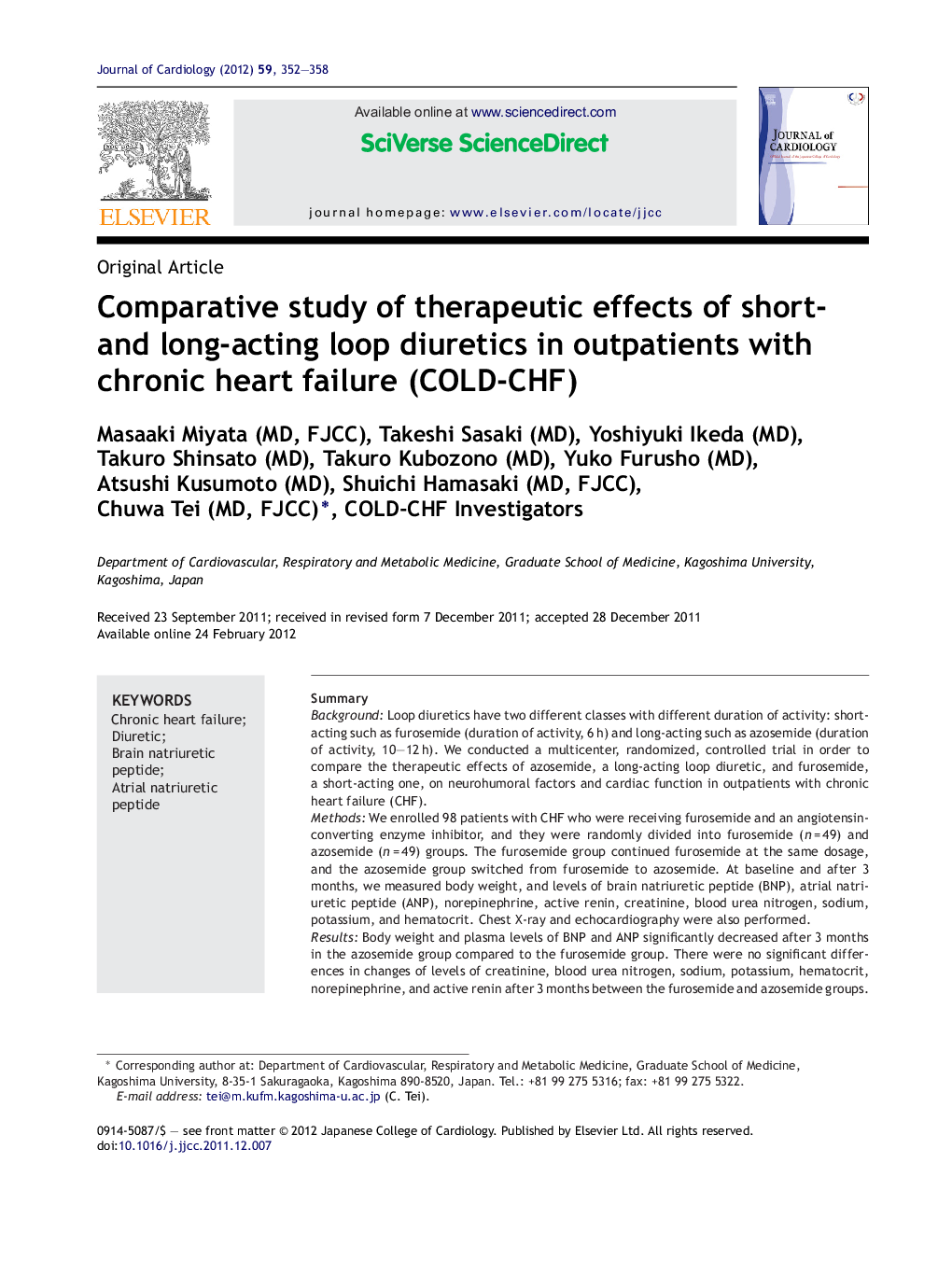| Article ID | Journal | Published Year | Pages | File Type |
|---|---|---|---|---|
| 2963524 | Journal of Cardiology | 2012 | 7 Pages |
SummaryBackgroundLoop diuretics have two different classes with different duration of activity: short-acting such as furosemide (duration of activity, 6 h) and long-acting such as azosemide (duration of activity, 10–12 h). We conducted a multicenter, randomized, controlled trial in order to compare the therapeutic effects of azosemide, a long-acting loop diuretic, and furosemide, a short-acting one, on neurohumoral factors and cardiac function in outpatients with chronic heart failure (CHF).MethodsWe enrolled 98 patients with CHF who were receiving furosemide and an angiotensin-converting enzyme inhibitor, and they were randomly divided into furosemide (n = 49) and azosemide (n = 49) groups. The furosemide group continued furosemide at the same dosage, and the azosemide group switched from furosemide to azosemide. At baseline and after 3 months, we measured body weight, and levels of brain natriuretic peptide (BNP), atrial natriuretic peptide (ANP), norepinephrine, active renin, creatinine, blood urea nitrogen, sodium, potassium, and hematocrit. Chest X-ray and echocardiography were also performed.ResultsBody weight and plasma levels of BNP and ANP significantly decreased after 3 months in the azosemide group compared to the furosemide group. There were no significant differences in changes of levels of creatinine, blood urea nitrogen, sodium, potassium, hematocrit, norepinephrine, and active renin after 3 months between the furosemide and azosemide groups. Echocardiography and chest X-ray did not demonstrate significant differences between the two groups.ConclusionsLong-acting azosemide is suggested to be useful for the improvement of neurohumoral factors compared with short-acting furosemide in patients with CHF.
